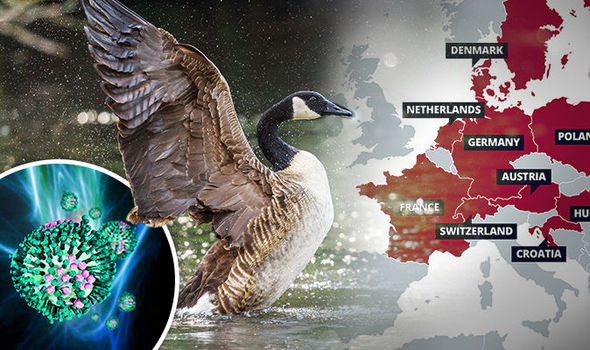Slovakia has confirmed a serious outbreak of avian influenza (bird flu) on a poultry farm in the southwestern town of Kamarno, according to a report by the World Organisation for Animal Health (WOAH) on Tuesday. This marks the latest in a series of H5N1 virus cases, as Europe grapples with a seasonal uptick in the highly contagious and deadly disease, which poses significant risks to both livestock and public health.
The H5N1 strain, which has devastated poultry populations worldwide in recent years, killed 200 birds at the Kamarno farm, located near Slovakia’s border with Hungary. Authorities were quick to respond, with the remaining 40,260 birds in the flock being culled to prevent the virus from spreading further.
This outbreak in Slovakia comes as no surprise, with neighboring Hungary recently reporting a resurgence of the virus. Avian influenza tends to flare up seasonally in Europe, particularly during the colder months when the virus is more likely to thrive in wild bird populations, which often serve as a reservoir for the disease. The virus is then transmitted to commercial poultry farms, where it can spread rapidly, leading to devastating losses for farmers and the industry.
In addition to Hungary, several other European nations have already reported new cases of bird flu in the past few weeks. Authorities are on high alert, implementing strict biosecurity measures and slaughtering infected flocks to prevent further spread. However, the battle against bird flu remains a significant challenge for the region’s poultry sector.
Although bird flu predominantly affects birds, certain strains, including H5N1, have been known to infect humans, though such cases remain rare. Nevertheless, the virus can pose serious public health risks, particularly for individuals working in close proximity to infected animals. The spread of the virus through poultry farms also carries economic consequences, as trade restrictions, production losses, and increased biosecurity costs weigh heavily on the industry.
Slovakian health authorities have ramped up surveillance efforts to ensure the virus does not spread to other farms or wildlife populations. European countries are working collaboratively to monitor the situation, sharing information and resources to contain the virus.
The resurgence of bird flu in Slovakia and Hungary underscores the broader concerns facing Europe as it enters the autumn and winter months. The virus’s spread among migratory birds exacerbates the problem, as these birds can carry the disease across borders, leading to outbreaks in new areas. The seasonal nature of avian influenza, combined with the dense nature of poultry farming in parts of Europe, presents a persistent challenge for authorities.
Efforts are being made to mitigate the damage, including improving biosecurity practices, culling infected flocks, and restricting the movement of birds in and out of affected areas. However, the virus’s highly contagious nature and its ability to mutate mean that ongoing vigilance will be necessary.
Bird flu is not confined to Europe. The H5N1 strain has caused outbreaks across Asia, Africa, and the Americas in recent years, prompting global health organizations to issue warnings about the risks to both animal and human populations. Countries around the world are working to control the disease, but the recurring outbreaks highlight the need for improved prevention strategies and global cooperation.
In Slovakia, the culling of over 40,000 birds marks a significant loss for the poultry farm in Kamarno and serves as a stark reminder of the ongoing threat posed by avian influenza. As Europe braces for more cases in the coming months, the focus will remain on containment and protection of both animal and human health.



